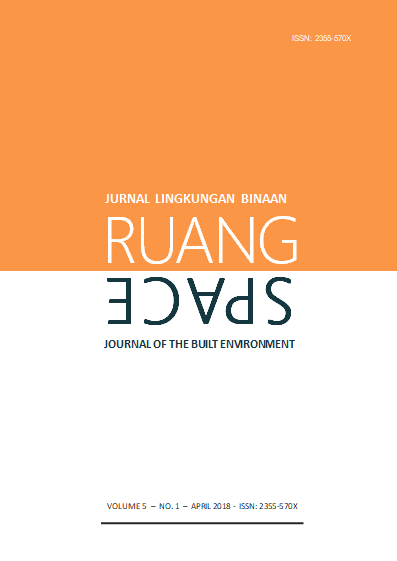Editorial: Globalised World and Local Cultures
Abstract
Global development contains a major paradox. On the one hand it tends towards a uniformity in capitalist economics (state neo-corporatism, increasing commodification of public assets, informational monopolies etc), but on the other to a diversity of social forms that rise above traditional cultures and practices. Globalisation therefore has its own culture and communities generated by production and diffusion of electronic information (Facebook, Linkedin, Twitter, WhatsApp, professional and educational networks etc). While this context exists across space it is not fundamentally place based like local communities where people raise their children, create social networks based on material needs and worship their gods. There exists an uneasy tension between these two events, the space based electronic culture and the place based communal culture.
Hence the question arises as to whether resistance is either necessary or possible against globalisation which appears to constitute an enduring and irresistible force. Is it possible to guarantee both cultural forms, or is one (the global) destined to exterminate the other? If so how can this be prevented? Local cultures are also faced with their own internal dynamics, usually tending towards stasis, e.g Ajeg Bali movement taking place in Bali Island. But cultures that do not adapt and develop are threatened with extinction. The fundamental difference between the global and the local lies in their structure. Globalisation is fundamentally an economic form that derives its organisation from the ideological tenets of capitalism. Local cultures derive theirs from tradition, religion, social relations, and language.
There are clearly a plethora of responses to these questions. For example is a third culture possible, one that merges the best of both systems, the space based and the place based urban life? Other questions follow. ‘Can there ever be “the best of both worlds”? in which case what is to be sacrificed from each social form? Given that capitalism as a system is largely out of control and has no moral core, no bargain seems likely or reasonable, at least from the local to the global. In addition, arguing logically against the seduction of the capitalist system seems pointless – we all want new cars, jobs, clothes and more significantly, our desires fulfilled in a world where needs have largely been transcended.
Contextualizing its fifth volume of publication within this context, Journal Ruang-Space offers eight articles. The first one is by Dwi Ely Wardani and M. Sani Roychansyah entitled Inklusivitas Jalur Pedestrian Di Sekitar Kampus Universitas Muhammadiyah Surakarta, Studi Kasus Penggal Jln. A.Yani, Jln. Garuda Mas dan Jln.Menco Raya Kartasura, Jawa Tengah (The Inclusivity of Pedestrian Paths surrounding the University of Muhammadiyah Surakarta, Case Study of A. Yani Road, Garuda Mas Road and Menco Raya Kartasura Road, Centre of Java Island). The second writing is authored by Cynthia E.V. Wuisang, Frits O.P. Siregar, and Faizah Mastuti. The title of this joint publication is Eksistensi Bangunan dan Kawasan Bersejarah di Kota Manado dan Peranannya sebagai Urban Heritage (The Existence of Historical Buildings and Zones in Manado City and Their Roles as Urban Heritages).
The third publication is written by Ariani Mandala and Vania Sheila, entitled Kontribusi Pencahayaan Buatan terhadap Kualitas Visual Bangunan pada Malam Hari: StudiKasus Bangunan Bersejarah di Sekitar Kawasan Simpang Lima, Semarang (The Contributions of Man Made Lightings towards the Visual Quality of Buildings in the Evening: Case Study of Historical Buildings Situated around Simpang Lima Zone in Semarang City). The fourth article is composed by Hafid Setiadi with a title of Perubahan Identitas Tempat dan Konflik Ruang di Pinggiran: Studi Awal Tentang Urban Habitus dalam Transformasi Ruang di Kota Depok, Jawa Barat (Change in Identity of a Place and Spatial Conflict in a Peripheral Area: A Preliminary Studi of Urban Habitus and Spatial Transpormation of Depok City, West of Java Island).
The fifth article is by Edi Subagijo and Tonny Suhartono with a given title of Model Pengembangan Kriteria Desain Rusunawa Berdasarkan Kepuasan Penghuni: Studi Kasus, Rumah Susun Sederhana Sewa Kutobedah di Kota Malang (Development Model for Design Criteria of Rental High-rise Housing Unit Based on Occupants' Satisfaction: Case Study of Kutubedah Rental High-rise Housing Unit in Malang City). The sixth paper is by Angela Upitya Paramitasari, Witanti Nur Utami, and Aria Adrian. The tittle of this paper is Identifikasi Kriteria Perancangan ‘Eks Palaguna’ di CBD Kota Bandung Berdasarkan Identitas Kota melalui Sense of Place (The Identification of Design Criteria for Ex Palaguna in Bandung Central Business District based on Urban Identity and Sense of Place).
The seventh article is authored by Ema Yunita Titisari, Antariksa, Lisa Dwi Wulandari, and Surjono, entittled Sumber Air dalam Ruang Budaya Masyarakat Desa Toyomerto Singosari, Malang (Water Sources in Cultural Space of the Toyomerta Community in Singosari, Malang). The last one is written by Ni Ketut Ayu Intan Putri Mentari Indriani, entitled The Formation of Territoriality within a Crowded Settlement of Kampung Jawa, in Denpasar City (Proses Terbentuknya Teritorialitas pada Permukiman Padat Penghuni di Kampung Jawa, Denpasar).
Downloads
The copyright of the received article shall be assigned to the journal as the publisher of the journal. The intended copyright includes the right to publish the article in various forms (including reprints). The journal maintains the publishing rights to the published articles.



